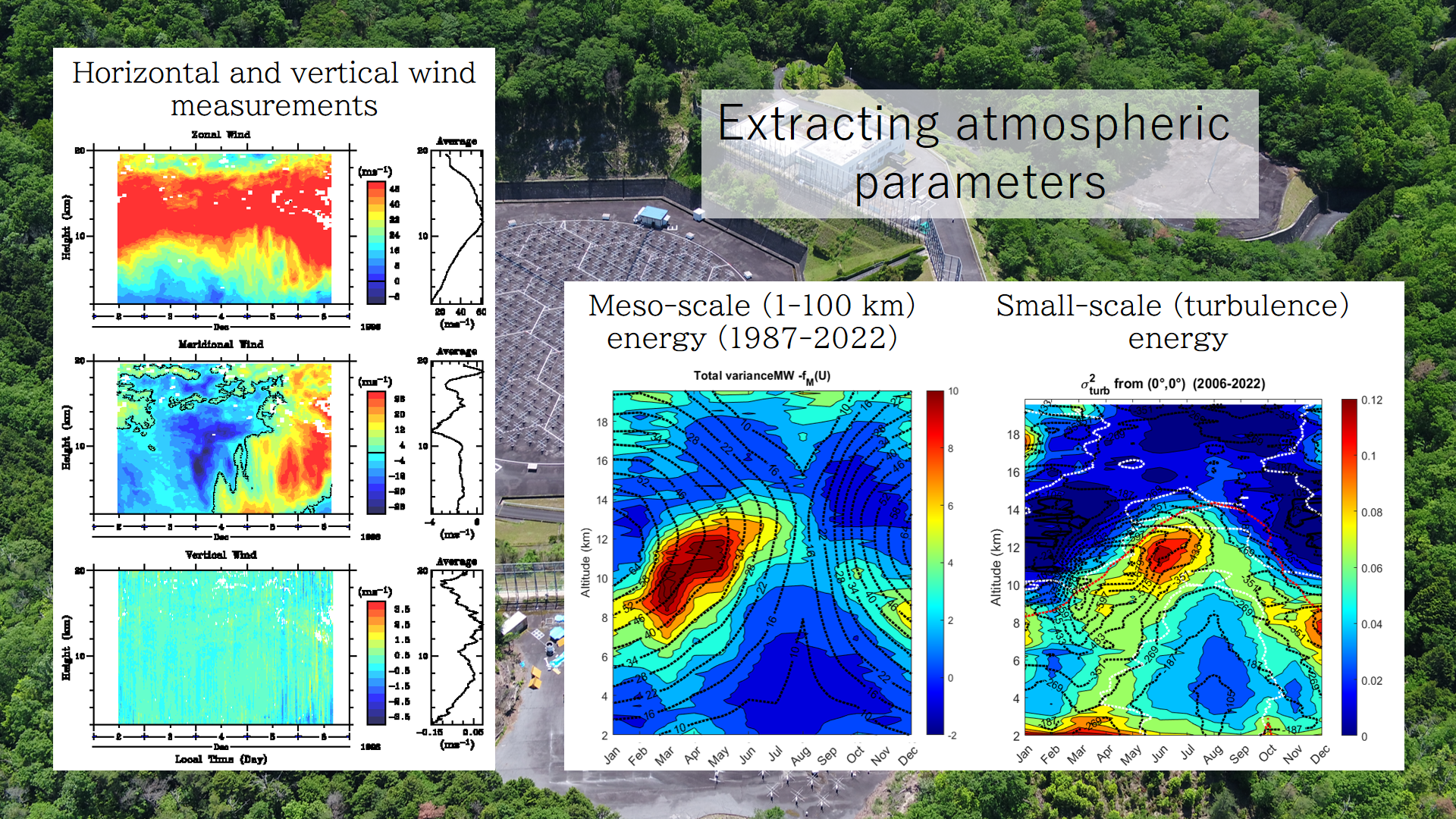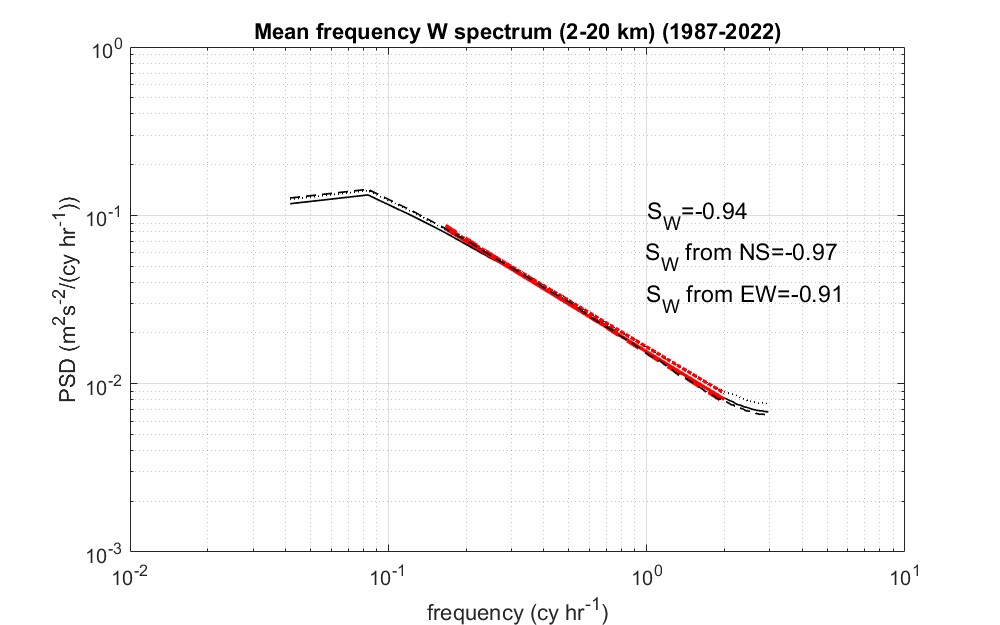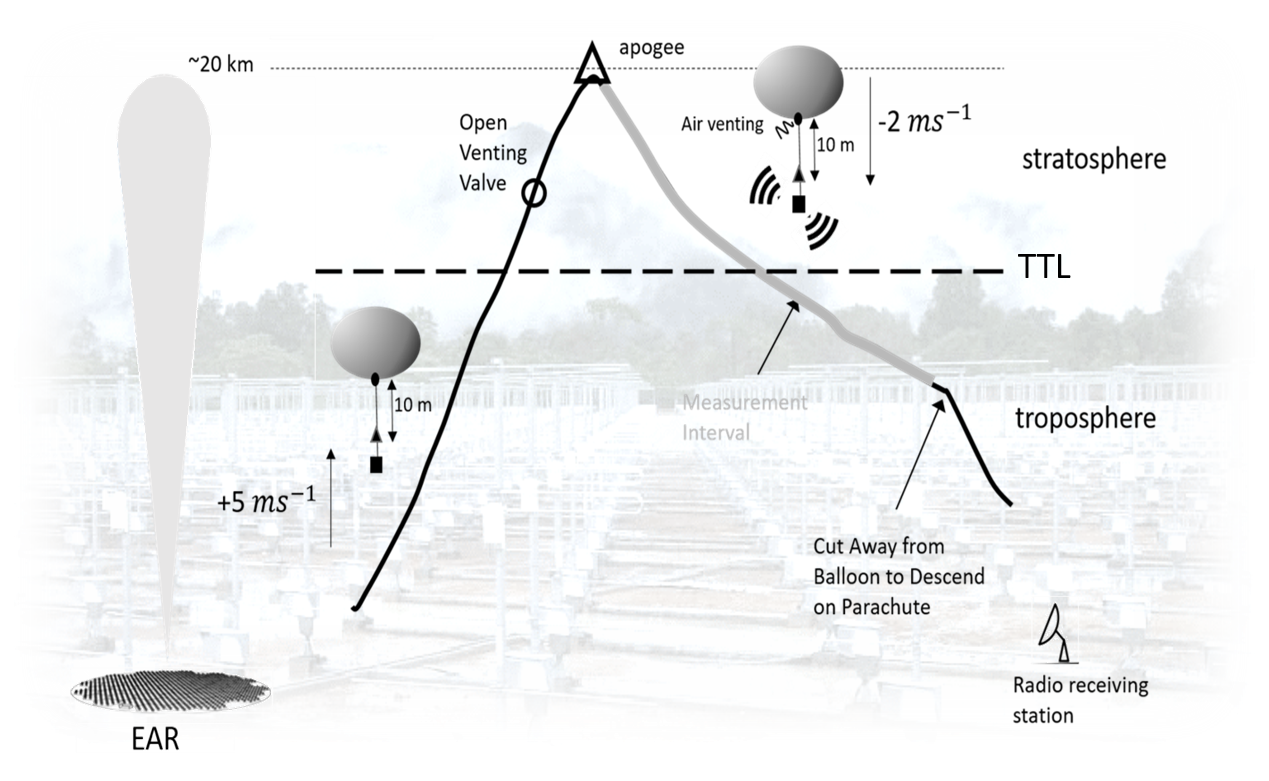Ongoing research activities
This page provides information on the latest published papers, as well as an overview of ongoing collaborations and projects at the Shigaraki MU Observatory (Japan) and the Equatorial Atmosphere Radar site (Indonesia).
(1) Characterization of turbulence in the Convective Boundary layer at Shigaraki MU Observatory
This research is made in collaboration with Prof. H. Hashiguchi (supported by JSPS KAKENHI (JP15K13568) and the research grant for Mission Research on Sustainable Humanosphere from Research Institute for Sustainable Humanosphere (RISH, Kyoto University), Dr M. Yabuki (RISH, partial support from JSPS KAKENHI grants 19H04238, 20K21844 and 22H03732) and Dr K. Yamaguchi (DPRI, Kyoto University, partial suport from JSPS Kakenhi KIBAN A grant 24H00291)

Publication:
- Turbulence kinetic energy dissipation rate estimated from a WindCube Doppler Lidar and the LQ7 1.3 GHz radar wind profiler in the convective boundary layer - Atmospheric Measurement Techniques, Luce H. and Yabuki M. (Feb. 2025)
Abstract: From 21 August to 15 September 2022, a WindCube v2 Infrared coherent Doppler Lidar (DL) supplied by EKO Co. (Japan) was deployed at the Shigaraki MU Observatory (Japan) near the LQ7 UHF (1.357 GHz) wind profiler in routine operation. Horizontal and vertical velocity measurements from DL were reliably obtained in the [40–300] m height range with vertical and temporal resolutions of 20 m and 4 seconds, respectively. The LQ7 wind measurements are collected with range and temporal resolutions of 100 m and 59 s, respectively, and 10-min average profiles are calculated after data quality control. Reliable LQ7 Doppler data are collected from the height of 400 m. Despite the lack of overlap in the height range, we compared the Turbulence Kinetic Energy (TKE) dissipation rate ε in the daytime planetary boundary layer estimated by the two instruments. A method based on the calculation of the one-dimensional transverse line spectrum of the vertical velocity W from mean W time series (TS method) was applied to DL (εDL). The same method was also applied to 1-min LQ7 data (εLQ7TS) to assess its performance with respect to DL despite the poorer time resolution. A more standard method based on the Doppler Spectral width (DS) was also applied to LQ7 (εLQ7DS) from the 10-min average profiles. We tested recently proposed models of the form ε=σ3/L where σ is half the spectral width corrected for non-turbulent effects and L is assumed to be a constant or a fraction of the depth D of the Convective Boundary Layer (CBL). The main results are: (1) For the deepest CBLs (max(D) >~1.0 km ) that develop under high atmospheric pressure, the time-height cross-sections of εLQ7DS and εDL show very consistent patterns and do not show any substantial gaps in the transition region of 300–400 m when εLQ7DS is evaluated with L~70 m, which is found to be about one tenth of the average of the CBL depth (L~0.1D) . (2) Hourly mean εDL averaged over the [100–300] m height range is on average about twice the hourly mean εLQ7TS averaged over the [400–500] m height range when D >~1.0 km. (3) Hourly mean εDL averaged over the [100–300] m height range and hourly mean εLQ7DS averaged over the [400–500] m height range with L~0.1 D are identical on average. Consistent with the fact that ε is expected to decrease slightly with height in the mixed layer, (2) and (3) imply an uncertainty as to the exact value of the L / D ratio: ~0.1 D < L <~0.2 D. We have also studied in detail the case of a shallow (D <~0.6 km) convective boundary layer that developed under low atmospheric pressure and cloudy conditions. Despite the fact that hourly mean εDL averaged over the [100–300] m height range and hourly mean εLQ7TS averaged over the [400–500] m height range show more significant discrepancies, maybe due to the different properties of the shallow convection, the time-height cross-sections of εDL and εLQ7DS show more consistent patterns and levels.
(2) Climatological studies of atmospheric parameters with the MU radar
This research is made in collaboration with Dr N. Nishi (Faculty of Science, Fukuoka University) and Prof. Hashiguchi (RISH).

Publication:
- A Climatological Study of the Frequency Spectra of Vertical Winds From MU Radar Data (1987–2022), Journal of Geophysical Research: Atmospheres, Luce H., Nishi .N and Hashiguchi H. (Nov. 2024)
Abstract: In this paper, we present a statistical analysis of the frequency spectra of vertical velocity W based on data collected by the VHF middle and upper atmosphere (MU) radar from 2.025 to 19.875 km altitude during several days per month over 36 years (1987–2022). We analyzed the mean spectral slopes SW in the band [0.5–6 hr], which is in the core of the period range for internal gravity waves at the MU radar latitude (∼36° N). First, we tested the performance of several spectral estimators when data are missing to minimize estimation bias on and variance. Second, we analyzed the properties of . We found a dependence on radar echo power aspect ratio and power imbalance between oblique beams maybe due to contaminations of measurements by the horizontal wind . After corrections, we found that: (a) SW in the troposphere ( N2 < 2 × 10-4 rad2 s-2 ) is almost seasonally invariant (∼−0.8) despite the strong variability of and (b) SW is highly variable in the stratosphere ( N2 < 2 × 10-4 rad2 s-2 ) from ∼0 to −1.2 and shows a clear exponential dependence on U at least up to 70 ms-1. An empirical expression of the apparent frequency spectra in the stratosphere is ~ ω α ln (U-Umin) with, for example, α ~-0.27 and Umin ~3.5 ms-1. From numerical simulations, we show that Doppler shift effects cannot explain the dependence on U. Therefore, the variation of SW with U may represent a real change in the shape of the intrinsic frequency spectrum, which is not considered in the theoretical models.

(3) Turbulence in the Tropical Tropopause Layer (TTL) (Indonesia)
This research initiated in 2024 is funded by a JSPS Grant KIBAN B (24K03091) and is made in association with Prof. H. Hashiguchi (RISH), Prof. M. Fujiwara (Faculty of Environmental Earth Science, Hokkaido University, Japan), Dr Noersomadi (BRIN, Indonesia), Prof. A. Awaludin (BRIN, Indonesia), Dr L. Triani (BRIN, Indonesia), Dr T. Sinatra (BRIN, Indonesia), Dr Syrarif Romadhon (BRIN, Indonesia), Prof. Lawrence (Colorado University, USA) and Dr A. Doddi (Colorado University, USA).




